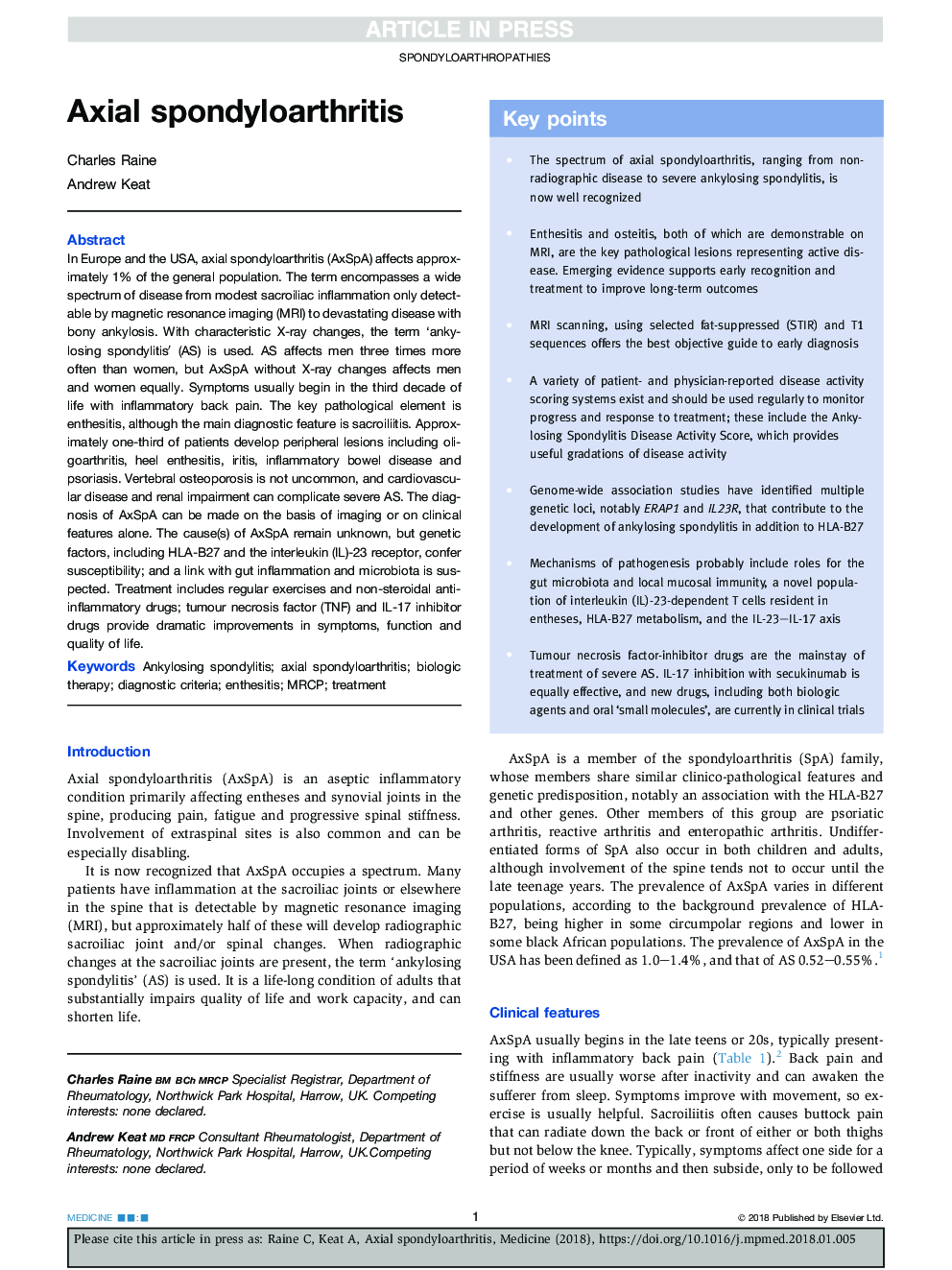| Article ID | Journal | Published Year | Pages | File Type |
|---|---|---|---|---|
| 8764041 | Medicine | 2018 | 6 Pages |
Abstract
In Europe and the USA, axial spondyloarthritis (AxSpA) affects approximately 1% of the general population. The term encompasses a wide spectrum of disease from modest sacroiliac inflammation only detectable by magnetic resonance imaging (MRI) to devastating disease with bony ankylosis. With characteristic X-ray changes, the term 'ankylosing spondylitisâ² (AS) is used. AS affects men three times more often than women, but AxSpA without X-ray changes affects men and women equally. Symptoms usually begin in the third decade of life with inflammatory back pain. The key pathological element is enthesitis, although the main diagnostic feature is sacroiliitis. Approximately one-third of patients develop peripheral lesions including oligoarthritis, heel enthesitis, iritis, inflammatory bowel disease and psoriasis. Vertebral osteoporosis is not uncommon, and cardiovascular disease and renal impairment can complicate severe AS. The diagnosis of AxSpA can be made on the basis of imaging or on clinical features alone. The cause(s) of AxSpA remain unknown, but genetic factors, including HLA-B27 and the interleukin (IL)-23 receptor, confer susceptibility; and a link with gut inflammation and microbiota is suspected. Treatment includes regular exercises and non-steroidal anti-inflammatory drugs; tumour necrosis factor (TNF) and IL-17 inhibitor drugs provide dramatic improvements in symptoms, function and quality of life.
Keywords
Related Topics
Health Sciences
Medicine and Dentistry
Medicine and Dentistry (General)
Authors
Charles Raine, Andrew Keat,
